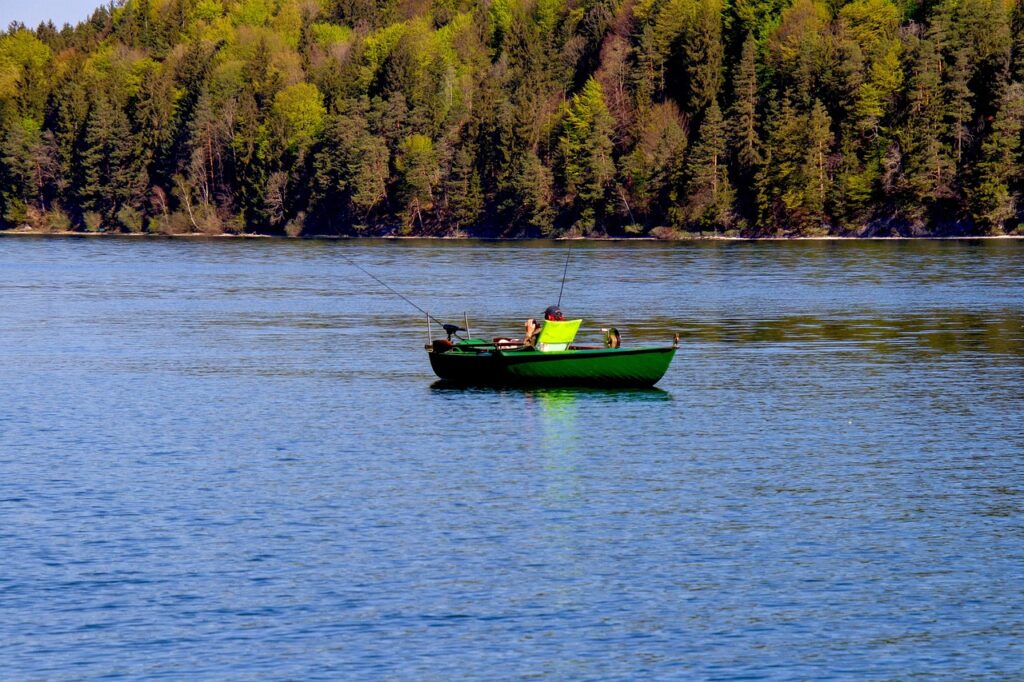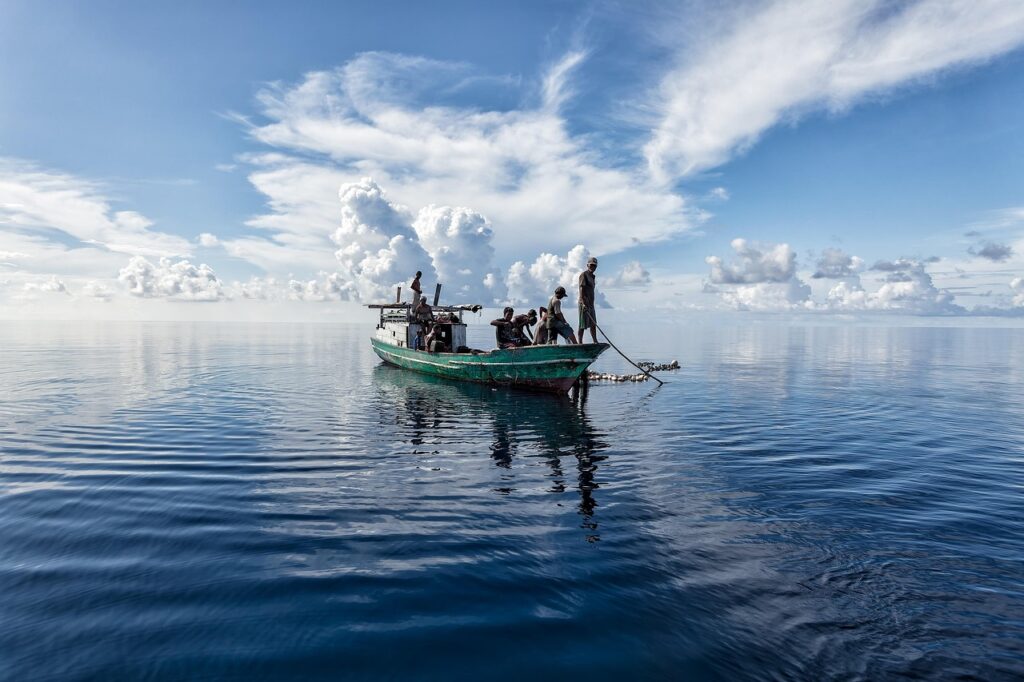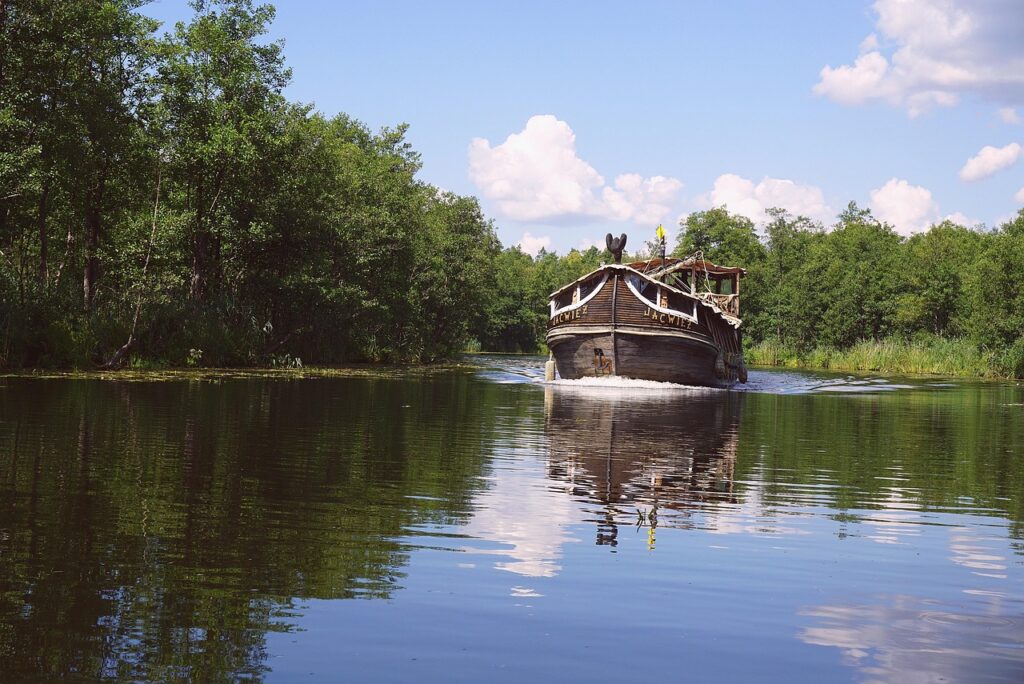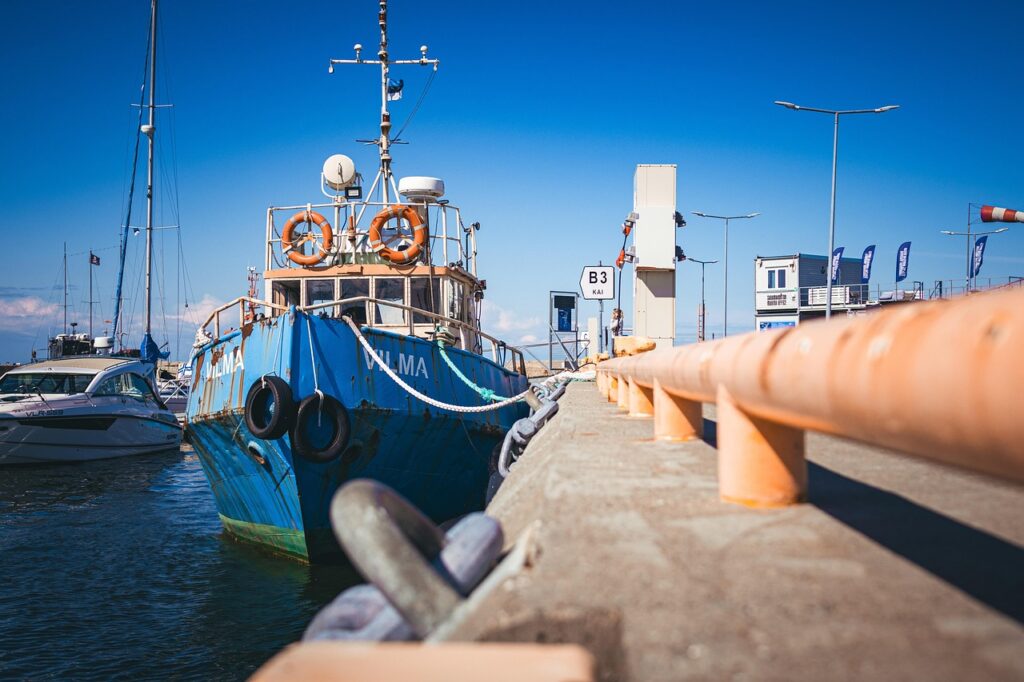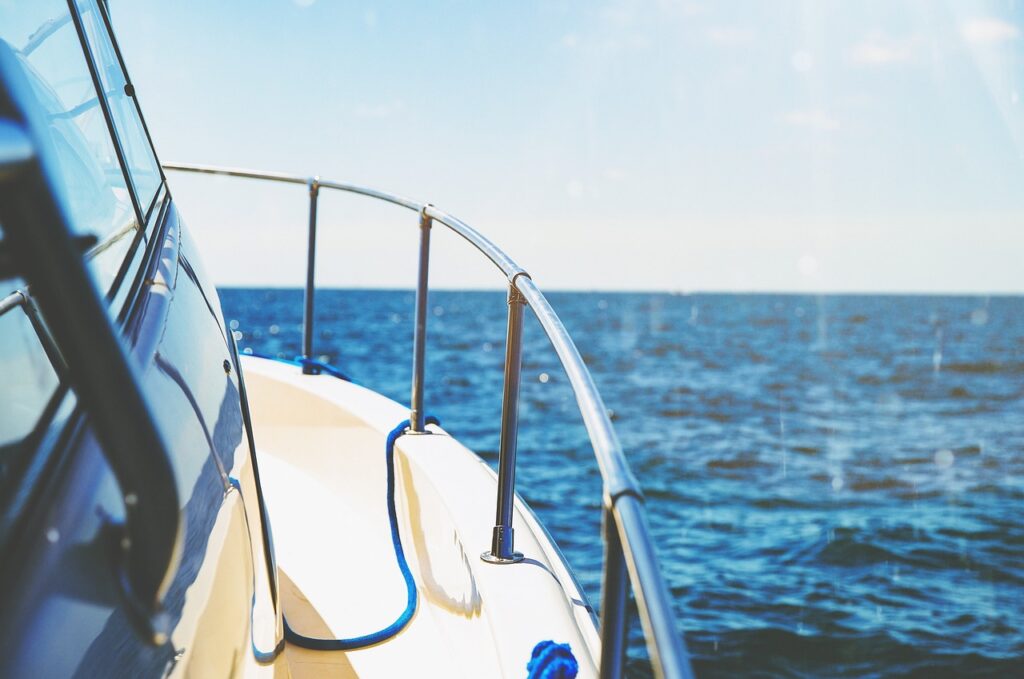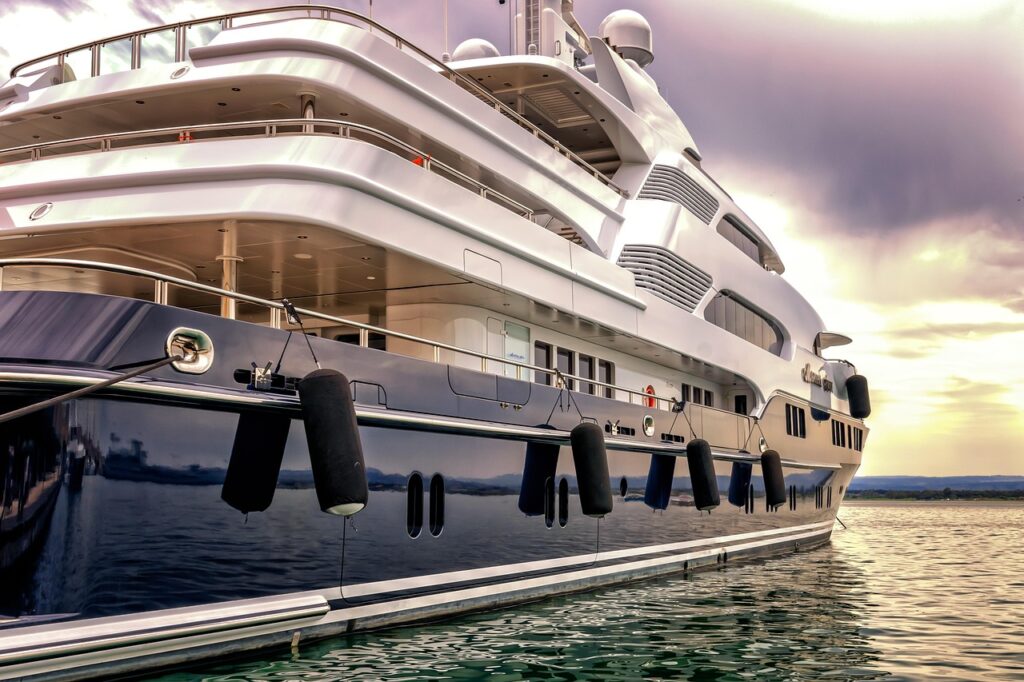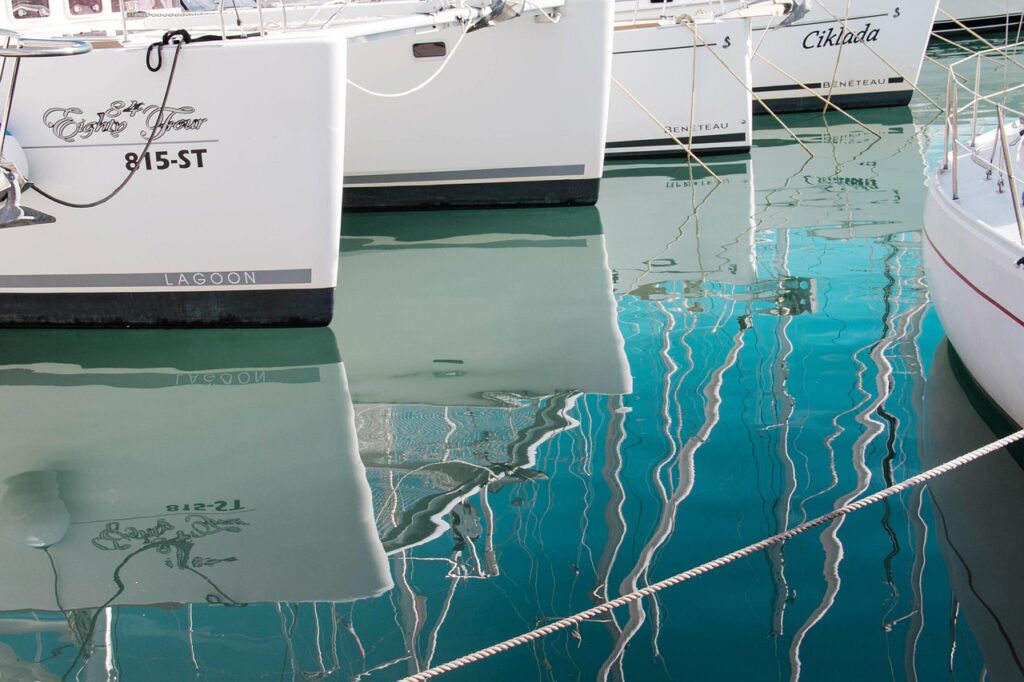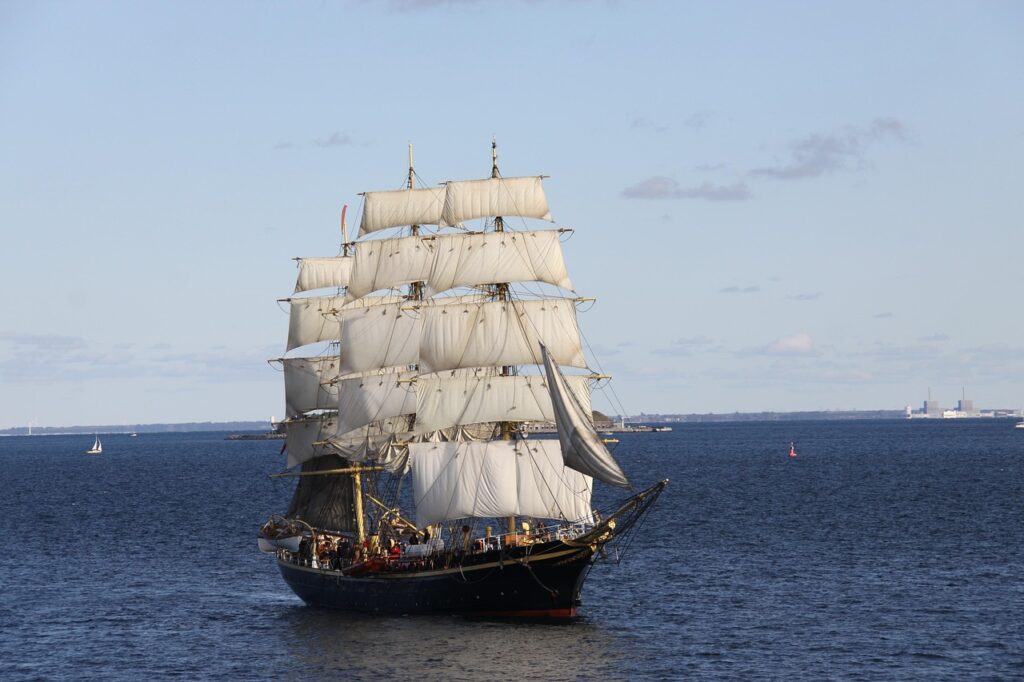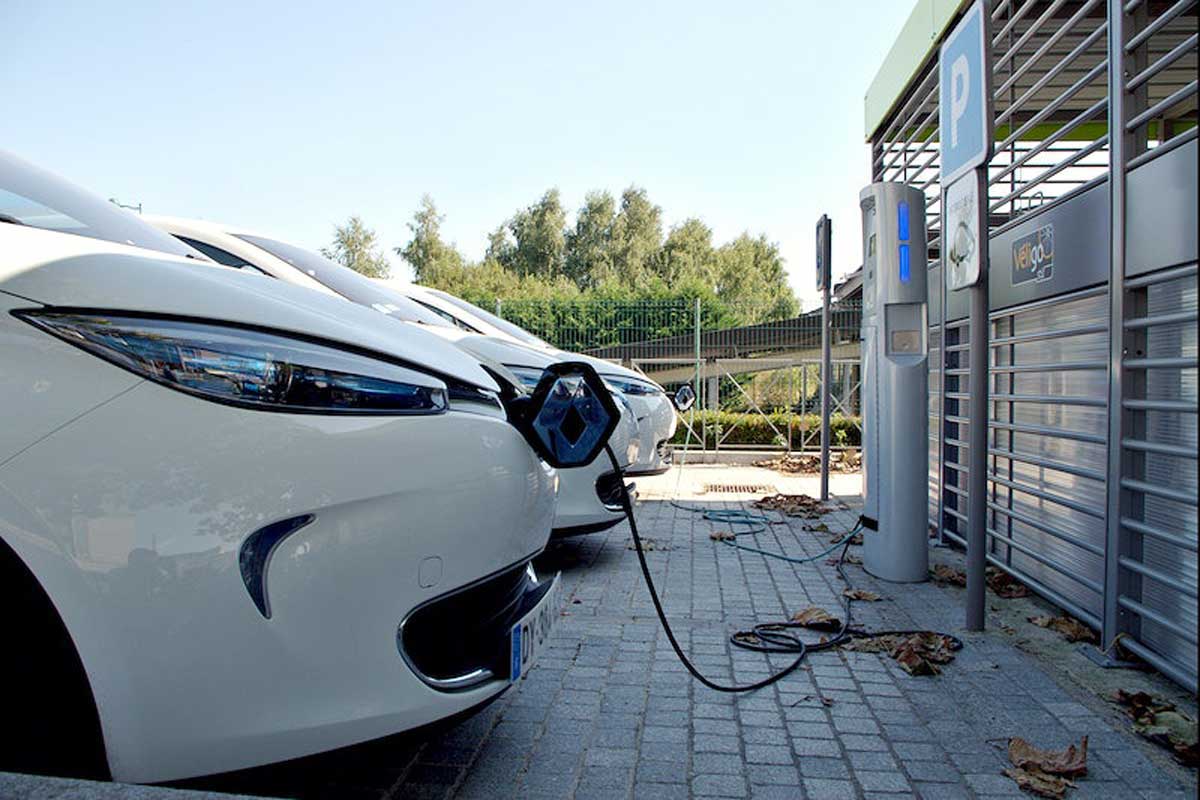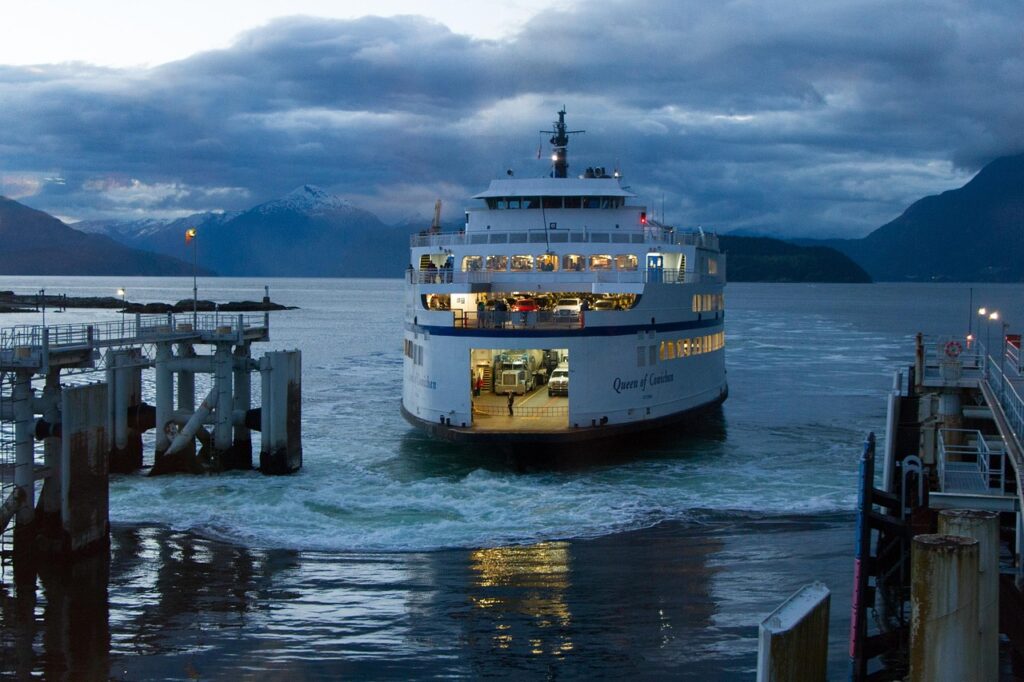
In the annals of automotive history, the mid-20th century stands as a monument to sheer, unadulterated automotive grandeur. It was an era when the roads were ruled by ‘land yachts’—those colossal American cars that prioritized comfort, style, and an unapologetic sense of presence above all else. Brands like Cadillac defined this philosophy, crafting vehicles that were not just modes of transport, but rolling statements of luxury and an almost defiant optimism. Yet, what if that same spirit, that same dedication to opulent design and commanding presence, ventured beyond the asphalt and onto the open water? The answer lies with the remarkable ‘Boat Cadillacs’ from the Golden Age of luxury, which we’re about to dive into.
Indeed, while General Motors’ Cadillac was busy sculpting steel masterpieces with towering tailfins and chrome accents, another company, the Cadillac Boat Company of Cadillac, Michigan, was translating that same ethos to an entirely different medium. Established in 1953, this pioneering firm embarked on a mission to build boats that weren’t just functional; they were designed to captivate, to perform, and to offer a slice of that coveted American luxury on lakes and rivers across the nation. Imagine the sleek lines, the bold styling, and the sheer confidence of a classic Cadillac car, now reimagined for the aquatic realm. That’s precisely the legacy we’re exploring.
Our journey will take us through the pivotal designs, the groundbreaking innovations, and the sheer ambition of a company that, despite its independence from the automotive giant, managed to embody the very essence of the ‘Cadillac’ name in its marine offerings. From innovative material use to daring, automotive-inspired aesthetics, these boats represent a fascinating chapter in the story of mid-century American luxury. So, strap in (or, rather, cast off!) as we unveil the first seven of these magnificent aquatic titans, each a testament to a golden age when style knew no bounds, whether on land or at sea.
1. **The Foundation: Cadillac Boat Co.’s Inaugural Vision (1954 Brochure)**The year 1953 marked the beginning of an extraordinary venture in Cadillac, Wexford County, Michigan, as the Cadillac Boat Company was established. Operating as a wholly owned subsidiary of the Wagemaker Company, a boat builder already renowned from Grand Rapids, this new entity immediately set its sights on making a significant splash in the burgeoning post-war recreational boating market. From its 110 7th Street base, with Mr. Raymond O. Wagemaker at the helm of all three associated firms, the foundation was laid for a brand that would soon become synonymous with quality and aspirational design.
Right from the outset, the Cadillac Boat Company demonstrated a clear vision for diversification, offering a product mix designed to appeal to a broad spectrum of boat enthusiasts. Their early catalog proudly showcased aluminum fishing boats and sleek runabouts, catering to both the practical angler and the speed-loving recreational boater. This strategic approach, combining utility with excitement, was a hallmark of their initial market penetration, ensuring they captured attention across various segments.
Crucially, their offerings also extended to elegant wooden boats, with hulls sourced from U.S. Molded Shapes, another Wagemaker-owned subsidiary. These molded veneer hulls were then finished by Wagemaker and marketed under their ‘Wagemaker Wolverine’ brand, but Cadillac also played a role in bringing these finely crafted wooden vessels to life. A full-page ad in ‘The Boating Industry’ trade magazine in January 1955, just a year after these initial brochures, prominently featured aluminum, molded wood, and strip-built boats, giving us a vivid snapshot of their ambitious product array and signaling their serious intent in the market.
This early commitment to offering a diverse range of materials—aluminum for durability and lightness, and wood for classic aesthetics and craftsmanship—established Cadillac Boat Company as a forward-thinking player. The January 1955 ad even boasted a photo of their substantial 100,000 square foot modern plant, an impressive testament to their scale and capabilities right from the very beginning. This wasn’t a small-time operation; this was a serious contender, ready to challenge the established order with its blend of innovation and classic appeal.
2. **Early Aluminum Prowess: The 1955 Aluminum Boat Line**In 1955, as the American economy boomed and leisure activities flourished, the Cadillac Boat Company’s commitment to aluminum craftsmanship truly shone through. Their dedicated 1955 Cadillac Aluminum Boats Ad highlighted a range of vessels that perfectly blended the brand’s nascent luxury ethos with the practical advantages of a then-modern material. Aluminum offered lightness, durability, and relatively low maintenance, making it an ideal choice for the growing number of families and individuals eager to embrace the joys of boating without the constant upkeep often associated with traditional wooden craft.
These aluminum fishing boats and runabouts weren’t merely utilitarian; they were designed with a keen eye for style that echoed the contemporary automotive trends. While perhaps not as overtly flamboyant as some later models, they featured clean lines and a robust build, promising reliability and performance. This focus on practical elegance allowed Cadillac to carve out a significant niche, demonstrating that a ‘boat Cadillac’ didn’t have to be exclusively about flash, but also about dependable quality and an enjoyable on-water experience.
The sheer volume of their output during this nascent period speaks volumes about their early success and the market’s reception. Between December 1953 and August 1955, the Cadillac Boat Company proudly produced 5,300 boats. This impressive figure underscored their efficiency and ability to meet demand, laying a strong foundation for future growth. Such rapid production rates hinted at an operation that was firing on all cylinders, turning out boats that quickly became a favored choice for many.
Their commitment to aluminum as a core material was not just a passing trend; it was a strategic decision that positioned them at the forefront of modern boat manufacturing. This early prowess in aluminum construction allowed them to offer a competitive edge, appealing to customers looking for a blend of performance, longevity, and contemporary design. It solidified their reputation as a versatile builder, capable of mastering different materials while maintaining a consistent standard of quality that was beginning to define the ‘Cadillac’ name in the marine world.
3. **Crafted in Wood: The 1955 Plywood Boat Offerings**While aluminum offered modern advantages, the Cadillac Boat Company, through its intricate connection with Wagemaker, also understood the enduring appeal of traditional wooden boat craftsmanship. The 1955 Cadillac Plywood Boats Ad showcased a different facet of their production capabilities, highlighting the beauty and classic aesthetic that only wood could provide. These were boats for those who appreciated the warmth of natural materials, the intricate joinery, and the timeless elegance that wooden vessels inherently possess.
These wooden boats, often featuring hulls crafted from molded veneer by U.S. Molded Shapes, demonstrated a collaborative approach that leveraged the strengths of the Wagemaker family of companies. U.S. Molded Shapes specialized in creating these intricate hulls, which were then either finished and branded as Wagemaker Wolverine boats or incorporated into Cadillac’s own distinct wooden boat line. This synergy allowed Cadillac to offer a sophisticated range of products without having to master every single aspect of construction in-house, ensuring a high standard of finish and design.
Opting for molded plywood for certain models was a clever move, combining the structural integrity and aesthetic appeal of wood with a more efficient manufacturing process than traditional plank-on-frame construction. This allowed Cadillac to produce stylish, durable wooden boats that were accessible to a wider market, maintaining the quality associated with the Wagemaker name while carrying the distinct branding of Cadillac. It was a perfect blend of heritage and innovation, offering boaters the best of both worlds.
These wooden offerings stood in elegant contrast to their aluminum counterparts, appealing to a different segment of the market – those who valued classic lines and the tactile experience of a wooden boat. This dual approach to materials, expertly advertised in 1955, demonstrated Cadillac Boat Company’s comprehensive strategy: to cover all bases and ensure that no matter a boater’s preference for material or style, there was a ‘Cadillac’ waiting for them, built with meticulous attention to detail and an undeniable flair.
Product on Amazon: PLYWOOD ONLY FOR BOAT STAND
Brand: Brownell
Binding: Apparel Product Group: Sports
Price: 18.69 USD
Rating: 4.8 Total reviews: 4
Material: Wood
Color: Orange
Special Feature: With Mounting Holes
Style: Rustic
Shopping on Amazon >>
4. **The 1957 Lineup: A Glimpse into Diversification**By 1957, the Cadillac Boat Company was not merely an emerging player; it was a rapidly expanding force in the marine industry, reflecting an impressive surge in its operational capacity and market presence. The 1957 Brochure content provides a vivid snapshot of a company thriving, diversifying its product range, and becoming an increasingly significant employer in Michigan. In 1955, the firm employed 27 men and 3 women, but by 1957, that number had dramatically “shot upward to 164 males and 3 females,” a testament to their burgeoning success and the growing demand for their ‘boat Cadillacs’.
This growth wasn’t just in headcount; it was also in their resilience and adaptability. Early in 1957, a devastating $750,000 fire tragically wiped out the Wagemaker plant in Grand Rapids, destroying 1,500 hulls and significant production space and equipment. In a remarkable demonstration of corporate synergy and crisis management, a great deal of the production of wooden boats was swiftly “shifted to Cadillac Marine and Boat Co.” This pivotal moment saw Cadillac step up, taking on increased responsibility and further solidifying its critical role within the Wagemaker enterprise.
Against this backdrop of expansion and adaptation, the 1957 lineup, as highlighted in their extensive brochure, likely showcased a more mature and varied collection of boats than ever before. This period was characterized by the company’s continuous effort to refine its aluminum, molded wood, and potentially strip-built offerings, ensuring that each vessel embodied the evolving standards of mid-century luxury and performance. The commitment to innovation was clear, as they aimed to provide boats that were not only aesthetically pleasing but also technologically advanced for their time.
The 1957 brochures would have presented a fascinating array of designs, each promising a distinct on-water experience. From nimble fishing craft to stylish runabouts, these boats were carefully engineered to deliver both excitement and comfort, mirroring the ‘land yacht’ philosophy of effortless cruising. This era cemented Cadillac Boat Company’s reputation as a versatile and reliable builder, capable of navigating both market growth and unforeseen challenges, all while continuing to deliver a product worthy of its prestigious, albeit borrowed, name.
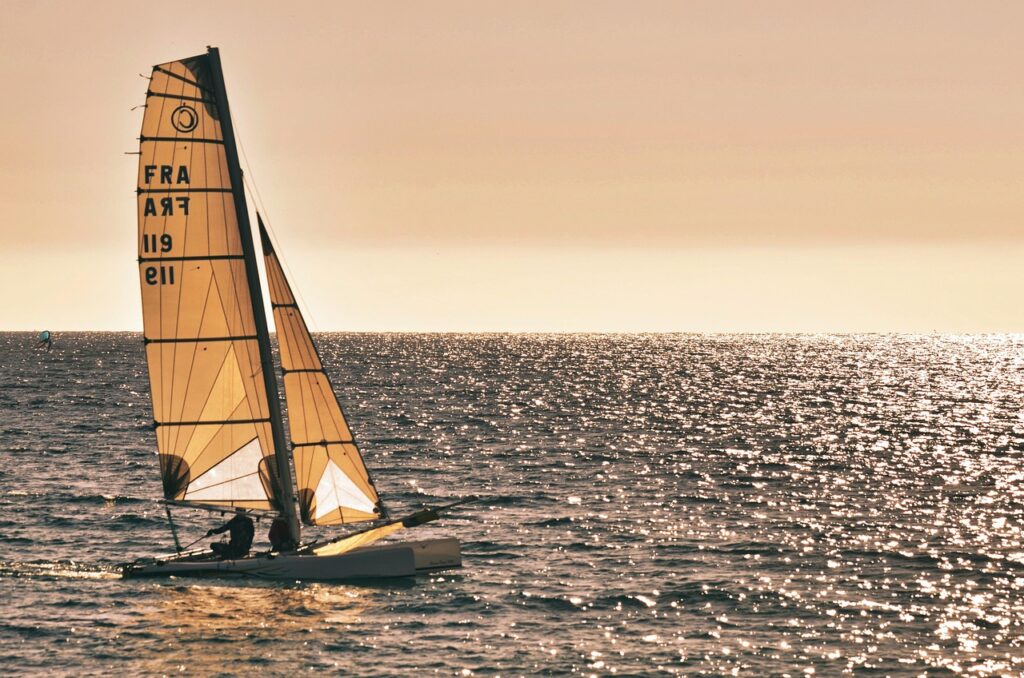
5. **The Legendary Sea Lark: Brooks Stevens’ Outboard Masterpiece (1957)**If ever there was a “boat Cadillac” that truly encapsulated the audacious spirit of the Golden Age of luxury, it was the sixteen-foot Sea Lark, a vessel so dramatically styled it could have rolled straight off a concept car stand. This extraordinary creation, conceived in 1957, was no ordinary production boat; it was the brainchild of industrial design maestro Brooks Stevens, who was on retainer with Evinrude Motors. His commission: to design an annual feature boat, a showstopper upon which Evinrude could proudly display their newest outboard motors, generating immense “fan fair at the annual Chicago and New York international boat shows.”
The Sea Lark was specifically engineered to promote Evinrude’s new 35 horsepower Lark outboard motor, and its design was nothing short of revolutionary for the marine world. It boasted a molded wood hull, ingeniously paired with a sleek fiberglass deck and accented with gleaming aluminum trim—a perfect marriage of the three boat building operations owned by Ray Wagemaker. This blend of materials highlighted the company’s versatility and its forward-thinking approach, utilizing the best properties of each to create a visually stunning and structurally sound craft.
But what truly set the Sea Lark apart was its unapologetically automotive-inspired styling. This sporty two-seat speedster featured “massive fins” that dramatically swept upwards, mirroring the iconic tailfin craze dominating car design of the era, particularly those from the likes of Cadillac itself. Adding to its futuristic appeal were “twin bubble windshields,” a design cue that further blurred the lines between high-performance automobiles and this incredible marine vessel. It was a bold statement, a vision of speed and luxury that made heads turn on every dock and showroom floor.
The Sea Lark wasn’t intended for mass production, but rather as a publicity vehicle, a floating billboard for cutting-edge design and engineering. As far as can be determined, Cadillac made only two of these incredible boats, cementing their legendary status. The thrilling news for enthusiasts is that “One has been discovered and is the coveted possession of a classic boat collector today,” ensuring that this magnificent piece of design history continues to inspire awe. The Sea Lark remains a powerful testament to how marine design in the Golden Age could be just as expressive, daring, and utterly glamorous as its automotive counterparts.
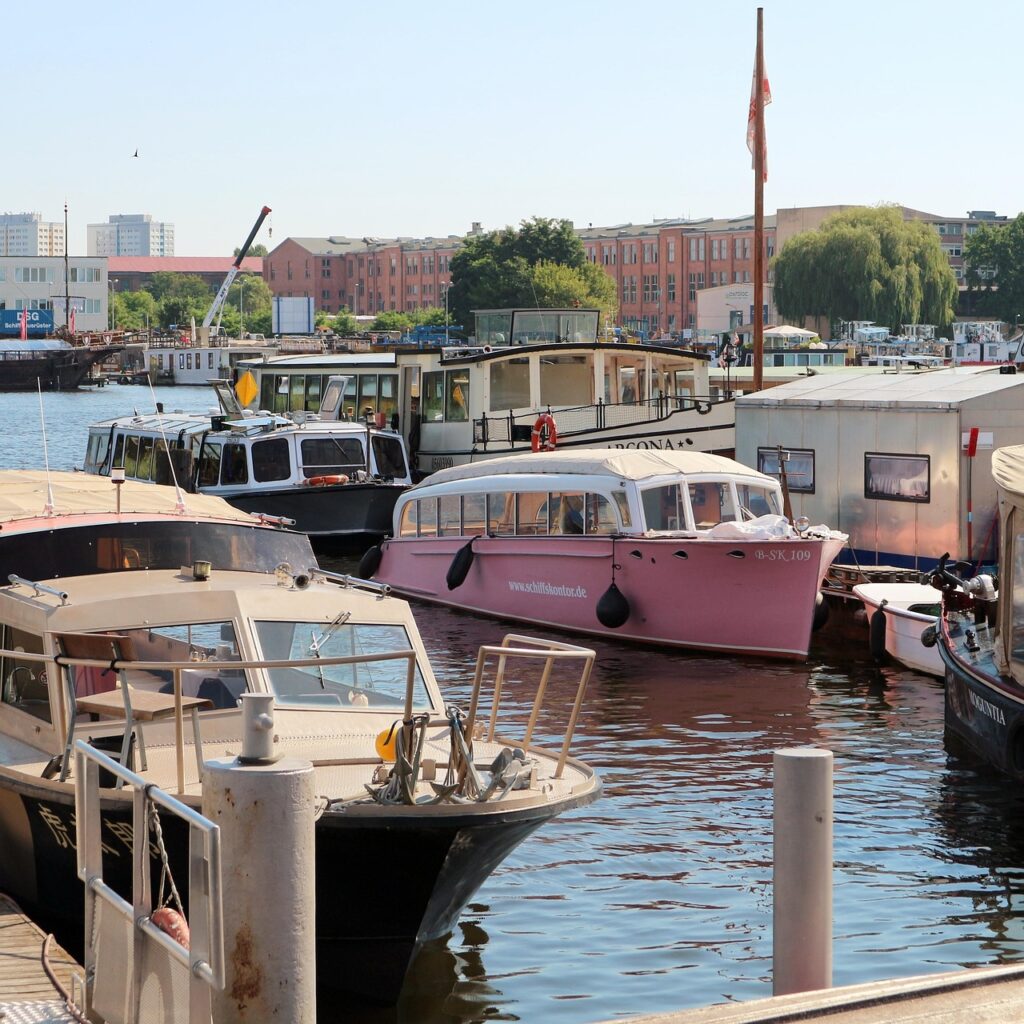
6. **The 14-Foot Custom: A Classic ’57 Cadillac Boat in Action**While the Sea Lark was a dazzling concept, the Cadillac Boat Company also produced more accessible yet equally stylish vessels that truly brought the ‘Cadillac’ experience to everyday boaters. Take for instance, a 1957 Cadillac Boat, a 14-foot Custom model, recently discovered and advertised on eBay. This particular boat, residing in Burton, Michigan, provides a tangible glimpse into the practical luxury that Cadillac Marine and Boat Company offered during its prime. It serves as a fantastic illustration of a stylish boat from an era when watercraft, much like cars, were becoming personal statements of flair and adventure.
This 14-foot Custom model, likely crafted from durable aluminum given the restoration notes, was designed to be powered by a capable outboard engine, such as the 50 hp Johnson outboard mentioned with this specific example. The sheer number of such boats produced indicates a widespread appeal; these weren’t just for the elite, but for anyone seeking a dependable, attractive boat that conveyed a sense of pride and quality. It was about making that ‘Cadillac’ feeling attainable for a broader audience, ensuring that hitting the lake felt just as special as cruising the highway.
The enduring appeal of such a classic lies not only in its original design but also in its potential for revival. The description of this particular 1957 model as a “fun restoration project” speaks volumes about its inherent quality and the passion it ignites in enthusiasts. Imagining polishing the aluminum, painting the accents in a period color, and updating the electrics and interior, one can almost picture it gleaming on the water once more, a true embodiment of mid-century charm. It’s a canvas for enthusiasts to infuse their own modern touches while respecting its vintage soul.
Indeed, the charm of these vintage boats is undeniable. As the original context notes, “You can not go wrong with that boat, especially for the price,” positioning it as an excellent entry point for new collectors or a beloved project for seasoned aficionados. It represents the successful democratization of stylish boating, proving that a ‘boat Cadillac’ could be both luxurious and attainable, inviting countless individuals to experience the open water in a vessel that truly looked the part, a testament to Cadillac Boat Company’s broad appeal.
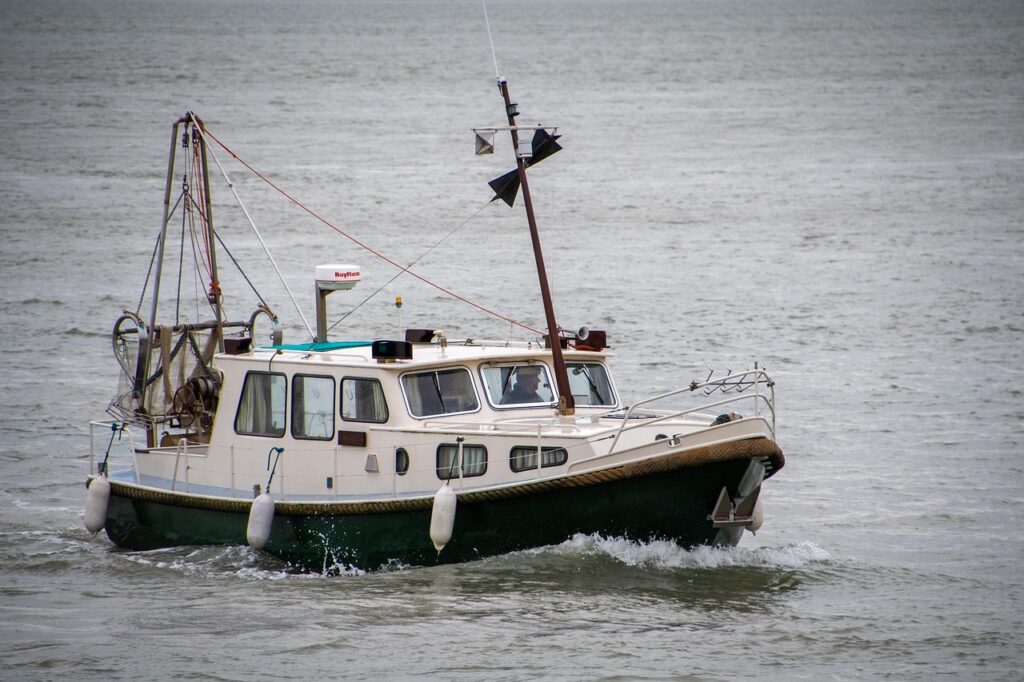
7. **The Stately Constellation: A 1958 14′ Icon**As Cadillac Boat Company continued to refine its offerings, 1958 saw the introduction of models that beautifully encapsulated the evolving aesthetics of the era. Among them, the 14-foot Constellation stands out as a quintessential ‘boat Cadillac,’ embodying a blend of elegance and performance that characterized the company’s increasing sophistication. A dedicated photo of the 1958 Cadillac 14′ Constellation hints at a design that, while perhaps not as radical as the Sea Lark, exuded a refined charm and solid craftsmanship, making it a beloved choice for families and speed enthusiasts alike.
The Constellation, like many of Cadillac’s diverse range, was likely available in various material configurations, a testament to the company’s commitment to flexibility and customer choice. The May 1958 full-page ad in ‘The Boating Industry’ proudly “pictured and describe aluminum, combination of aluminum and fiberglass, and molded wood boats.” This multi-material approach meant that the Constellation could be tailored to different preferences, offering the robustness of aluminum, the classic appeal of wood, or the emerging benefits of a composite design. It truly allowed boaters to select their perfect ‘Cadillac’ for the waves.
This particular ad campaign also famously promoted Cadillac’s entire lineup as the “sweetest boat afloat.” This evocative slogan perfectly captured the brand’s ambition: to offer boats that weren’t just functional, but delivered an unparalleled experience of smoothness, comfort, and effortless elegance on the water. The Constellation, with its likely sleek profile and carefully considered ergonomics, would have been a prime example of this promise, designed to glide across the water with a grace befitting its prestigious name.
The Constellation, therefore, represents a mature phase in Cadillac Boat Company’s design philosophy – a perfect balance between eye-catching aesthetics and practical application. It showcased how the company had honed its craft, offering a product that was both broadly appealing and distinctly luxurious, solidifying its position in the market as a purveyor of high-quality, stylish recreational vessels. Its presence in the 1958 catalog marks it as a true icon of the ‘boat Cadillac’ era, a testament to innovation and enduring design.
8. **The Legal Tussle: Cadillac vs. Cadillac (The GM Lawsuit)**Imagine a scenario where a colossal automotive titan, known globally for its luxurious land yachts, decides to take on a fledgling boat builder. This wasn’t a scene from a Hollywood script, but a very real ‘David vs. Goliath’ legal battle that unfolded in the mid-20th century. General Motors, the automotive giant behind the iconic Cadillac cars, moved to protect its revered name from the Cadillac Boat Company, an independent entity making waves on the water.
The initial skirmish began subtly in October 1955, when the Cadillac Boat firm first filed for trademark protection of ‘Cadillac.’ General Motors wasn’t having any of it. By March 1956, their opposition was formally lodged with the Official U.S. Patent Register. The situation escalated dramatically in February 1957, when GM filed a full-blown lawsuit against Cadillac Marine & Boat Co., claiming exclusive rights to the name and demanding that the boat builder cease and desist using it. It seems a bit rich, considering ‘Cadillac’ was a Michigan city long before it became GM’s top brand.
Yet, much like a plucky small boat weathering a storm, the Cadillac Marine & Boat Co. stood its ground. In a stunning turn of events in 1964, a federal court delivered a decisive blow to the automotive Goliath. The judge ruled unequivocally that General Motors did not possess a monopoly on the name ‘Cadillac.’ Furthermore, in a rare display of judicial retribution, GM was ordered to pay a significant sum of $41,000 to the boat maker to cover legal fees and compensation for loss of reputation. It was a victory for the underdog, proving that a name rooted in a city’s heritage couldn’t be solely owned by a corporate behemoth.
This legal triumph not only vindicated the boat company but also cemented its independent spirit. It highlighted the challenges and pressures a smaller manufacturer faced when daring to share a name, even by coincidence, with an industry giant. The entire episode serves as a fascinating footnote in the history of American industry, demonstrating the enduring power of a local legacy against corporate might.
9. **The 1958 Cadillac Seville: Pinnacle of Plywood Luxury**If the term ‘boat Cadillac’ truly conjures an image of unparalleled aquatic opulence, then the 1958 Cadillac Seville, Model 505, was its undisputed flagship. This wasn’t merely a vessel; it was a floating work of art, designed to epitomize the ‘haute design’ philosophy prevalent in the late 1950s for vehicles of all sorts. With its double-cockpit layout and luxurious adornments, the Seville was a testament to the idea that true elegance knew no bounds, whether on the highway or skimming across a lake.
Crafted as a 15-foot molded plywood runabout, the Seville’s construction was a showcase of meticulous craftsmanship. Its deck planks alternated in rich mahogany and lighter avodire, creating a visually striking result that exuded sophistication. Powered by a special edition 30 HP Evinrude outboard engine, this boat was engineered not just for speed, but for an experience that was as smooth and refined as its automotive namesake. It’s the kind of boat that makes a grand entrance, even when simply docked.
What truly set the Seville apart were its bespoke luxury features. From its ‘fantastic cutwater’ that gracefully sliced through the waves to its bold ‘Cadillac Seville’ name plate, every detail was carefully considered. It even boasted gleaming Caddy chrome trim and the iconic Caddy crown crest, leveraging a clever deal made with GM at the time to enhance its prestigious appeal. Inside, the floor-mounted shifter and throttle were unusual and added to its bespoke, high-end feel, truly blurring the lines between marine and automotive luxury.
However, such unparalleled luxury came with a price tag to match. At $1,245 FOB the plant in Cadillac, MI, it was considered a ‘super-expensive little boat’ for its time. Consequently, very few orders were placed for the Seville. This rarity makes models like hull number M5883, which was the 83rd boat produced by the company in 1958 (encompassing total production of mostly aluminum and very few molded plywood hulls), exceptionally coveted by collectors today. It’s a true testament to its exclusivity.
One such example, acquired from a barn in late 2010, underwent an active preservation process, emerging in May 2013 on its 1959 Tee Nee tilt trailer, a pristine relic of an era when design knew no compromises. The Seville, with its original Evinrude outboard and matching blue upholstery, continues to captivate, embodying the ultimate expression of boat-building artistry and a glorious vision of American luxury afloat.
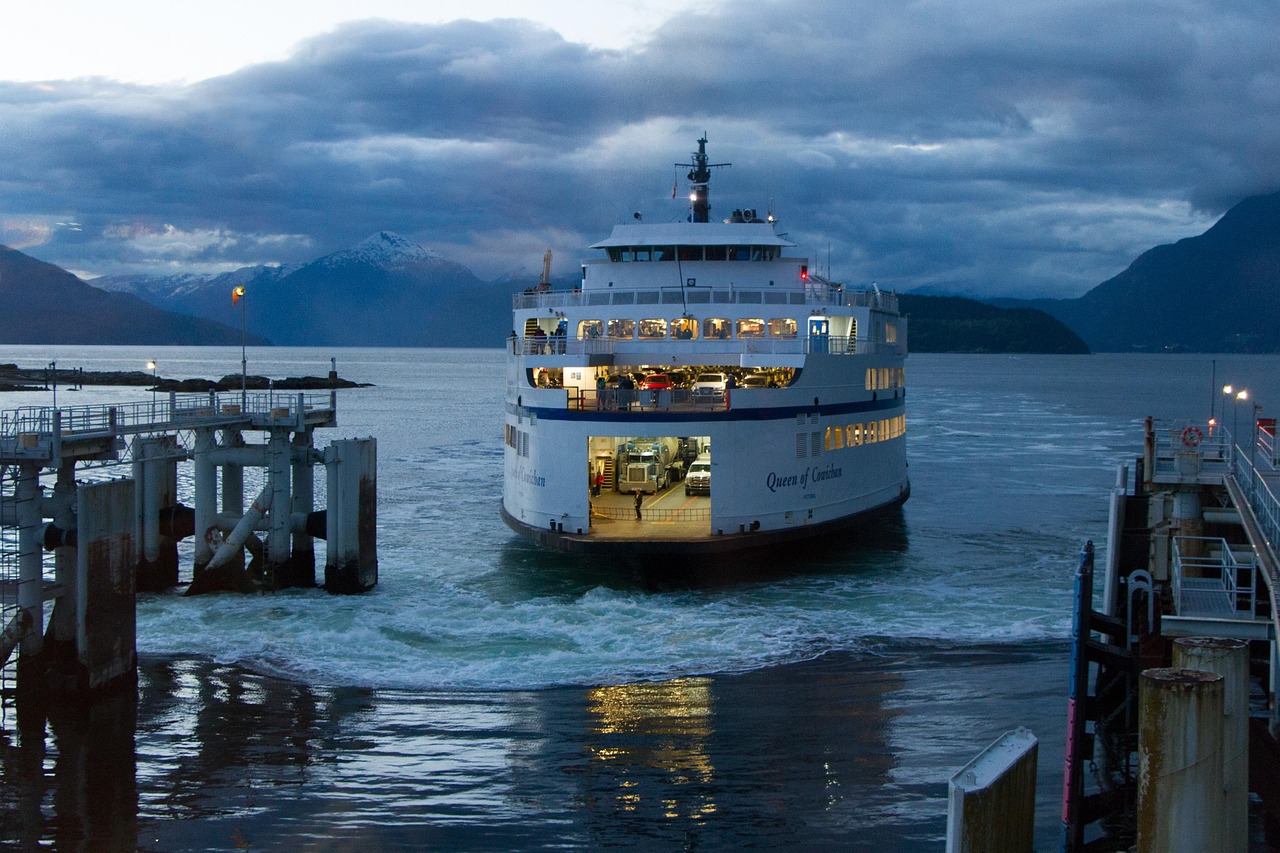
10. **The Company’s Ascent: Growth and Renaming (1958-1960)**The late 1950s marked a period of significant maturation and expansion for the Cadillac Boat Company. Reflecting its broader ambitions and increasingly diverse product range, the firm underwent a strategic renaming after 1957, officially becoming the Cadillac Marine and Boat Company. This evolution in name signaled a deepening commitment to the marine industry and an assertion of its growing prowess in the market, no longer merely a ‘boat’ company but a dedicated ‘marine’ enterprise.
This growth wasn’t just in nomenclature; it was tangible and impressive. By 1958, John H. Bushnell, a key figure from the earlier years, had risen to the position of Vice-President and Director for Sales. His leadership proved instrumental in extending the company’s reach. Bushnell orchestrated ambitious distribution agreements, notably arranging for Cadillac boats to be sold in new, crucial territories including Texas, Oklahoma, Arkansas, and Louisiana, through the Dallas-based Manufacturers’ Marketing Associates. This expansion into the heart of America’s boating regions was a clear sign of the company’s upward trajectory.
The increase in workforce further underscored this burgeoning success. While the company employed 164 males and 3 females by 1957, that number dramatically ‘shot upward’ to 281 males and 3 females by 1960. This surge in employment speaks volumes about the escalating demand for their boats and the company’s efficiency in meeting that demand. It solidified Cadillac Marine and Boat Company as a major employer in Wexford County, Michigan, contributing significantly to the local economy and community.
Overseeing this dynamic period was Gaylord Gill, who served as the Manager of the firm in 1960, guiding the company through its zenith. The 1958 models, continuing to capture attention, were proudly advertised in the Wagemaker Wolverine Boats brochure, showcasing the ongoing synergy within Ray Wagemaker’s enterprise. This era truly represented the peak of Cadillac Marine’s operational scale and its confident stride in the luxury boating segment, setting the stage for even bolder moves.
11. **Embracing the Future: The Introduction of Fiberglass (1959)**The narrative of Cadillac Marine and Boat Company is one of constant evolution, an unyielding pursuit of innovation to meet shifting market demands. While they had mastered aluminum and celebrated the classic appeal of molded wood, the late 1950s heralded a new, transformative material in boat building: fiberglass. Ever forward-thinking, Cadillac Marine officially added fiberglass boats to their product line in 1959, demonstrating their commitment to ‘covering all markets’ and staying at the forefront of modern marine technology.
This wasn’t merely a token gesture; it was a strategic diversification. Fiberglass offered a compelling suite of advantages that resonated with the burgeoning recreational boating market. Its inherent durability, resistance to rot, and significantly reduced maintenance requirements made it an attractive option for consumers. Furthermore, fiberglass allowed for more complex and aerodynamic hull designs, opening new avenues for styling that mirrored the sleek, futuristic aesthetics dominating automotive design of the period. It was about creating boats that were not just beautiful but also built to last with minimal fuss.
The company wasted no time in promoting this new direction. The 1959 Cadillac Fiberglass Boats Ad proudly announced their latest offerings, signaling to the boating world that Cadillac Marine was embracing the future. These new models likely integrated the brand’s established design language into the new material, ensuring that the distinctive ‘Cadillac’ style remained intact, regardless of the underlying construction. It was an exciting time for both the company and boating enthusiasts.
By incorporating fiberglass, Cadillac Marine ensured its product mix was comprehensive, appealing to a broader spectrum of boaters. They had a solution for every preference: the lightness and strength of aluminum, the timeless elegance of wood, and now, the modern durability and sleekness of fiberglass. This strategic move was vital for continued competitiveness, solidifying their reputation as a versatile and innovative builder, truly a ‘boat Cadillac’ for every discerning individual.
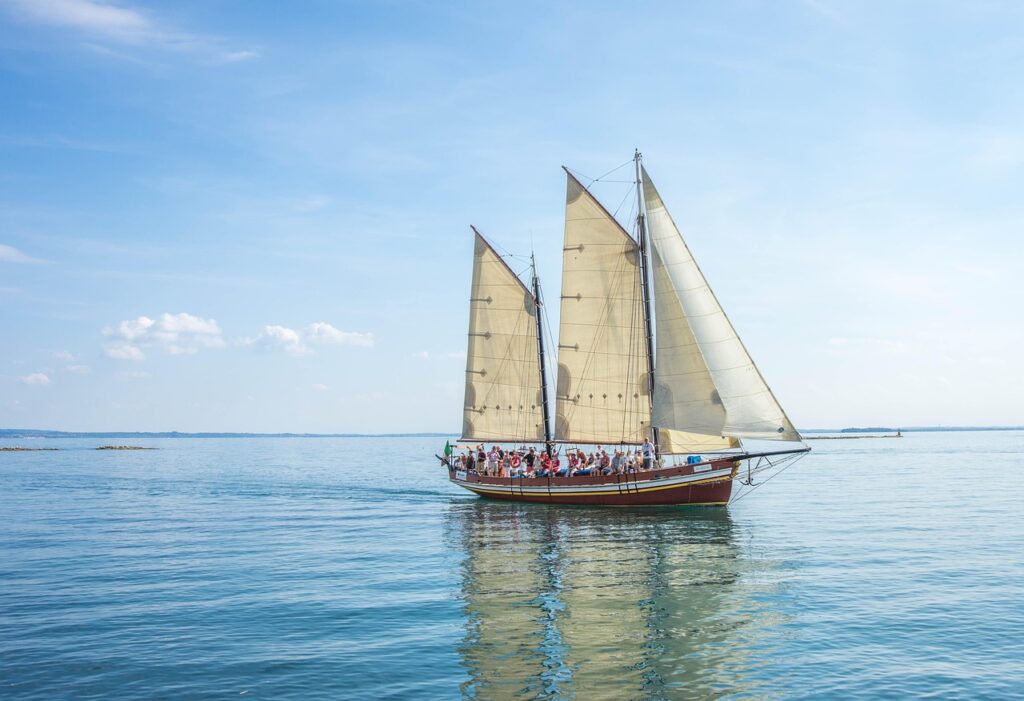
12. **The Final Flourish: 1960 and 1962 Outboard Models**Even as significant corporate shifts began to cast shadows over the horizon, the Cadillac Marine and Boat Company continued to produce compelling models, a testament to its enduring design ethos and the skill of its workforce. The years 1960 and 1962 saw the introduction of new Cadillac outboard boat models, showcasing a final flourish of the company’s independent spirit before major transformations would irrevocably alter its course. These boats represent the culmination of years of design refinement and manufacturing expertise.
These later models, likely building on the established success of their aluminum, wooden, and now fiberglass predecessors, continued to offer boaters a blend of performance and undeniable style. They were designed to capture the essence of mid-century leisure, providing reliable and attractive platforms for fishing, waterskiing, and general recreation. They embodied the promise of open-water adventure, a hallmark of the ‘boat Cadillac’ experience that had captivated so many enthusiasts.
However, the context of their production reveals underlying turbulence. In March 1960, a telling detail emerged: ‘Thirty workers were back on the job… after the plant being closed for one month.’ This brief closure hints at the brewing instabilities and challenges that were beginning to affect the company’s operations. Despite these intermittent interruptions, the persistence in launching new models demonstrates a resilience and a determination to maintain market presence, even if the waters ahead were becoming increasingly choppy.
These 1960 and 1962 offerings stand as important markers in the Cadillac Marine story. They represent the last independent designs under the original Wagemaker-owned structure before the company underwent a series of profound ownership changes. For collectors, these boats are precious artifacts, embodying the final iterations of a proud legacy, a last glimpse into the vibrant design philosophy that defined ‘boat Cadillacs’ in their golden age.
13. **A Cascade of Changes: Shifting Ownership and Consolidation (1960-1961)**The year 1960 ushered in a tumultuous period of transformation for Cadillac Marine & Boat Co., marking the beginning of the end of its original ownership structure. On April 15, Ray Wagemaker, the visionary president behind the entire enterprise, made the momentous decision to sell all his boat operations. The new proprietors were a trio of men: Walter E. Schott, Jr., Charles J. Schott, and Harrison O. Ash, signaling a dramatic shift in leadership and strategic direction for Cadillac Marine.
Almost immediately after this pivotal sale, a new wave of challenges and consolidations emerged. Just days later, around April 23, 1960, a $250,000 fire tragically struck the U.S. Molded Shapes plant. In response, operations of both Wagemaker Wolverine and U.S. Molded Shapes were swiftly ‘shifted to Cadillac Marine & Boat Co.’ This effectively centralized much of the production, making Cadillac Marine the primary hub for the combined boat-building efforts under the new ownership. It was a period of intense restructuring, forcing rapid adaptation and integration.
This consolidation also necessitated finding new production spaces. The former B.F. Goodrich plant at Cadillac was quickly secured, providing much-needed capacity for the expanded operations. Such rapid realignments demonstrate the urgency and scale of the changes unfolding. The new owners were clearly attempting to streamline and strengthen the combined entities, aiming to leverage Cadillac Marine’s established infrastructure and workforce.
However, this collaborative ownership was short-lived. By April 1961, Harrison Ash had gained complete control, becoming the sole proprietor of Wagemaker, Cadillac, and U.S. Molded Shapes. This move further concentrated power and strategy. Ash wasted no time in rebranding, changing the business names to Ash-Craft Company at that time. This transformation marked the definitive end of the ‘Cadillac Marine and Boat Company’ as an independent entity, ushering in a new, albeit brief, chapter under a different banner.
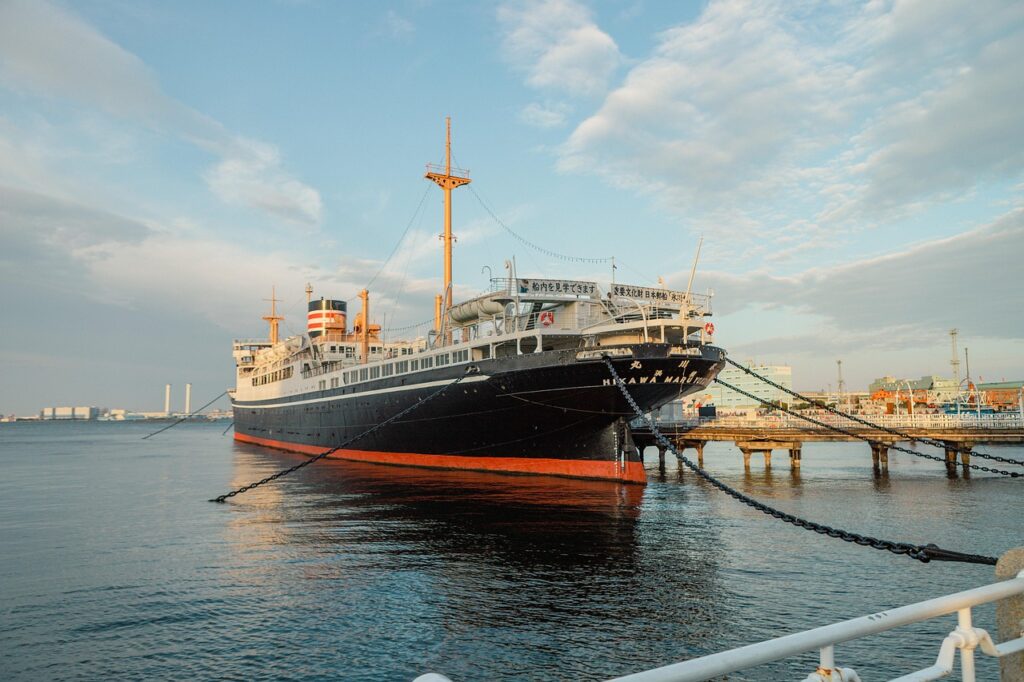
14. **The Twilight Years: Ash-Craft, Bankruptcy, and the End of an Era (1961-1962)**Under Harrison Ash’s singular control and the new ‘Ash-Craft Company’ banner, the final chapter of this once-vibrant boat-building legacy began to unfold rapidly. Despite ambitious plans, the period between 1961 and 1962 was marked by a cascade of divestments and ultimately, financial distress. The first major sign of trouble arrived with the auction of U.S. Molded Shapes, Inc., at Cadillac, Michigan, on Tuesday, October 10, 1961. Its machinery, brand name, and goodwill were acquired by Chicago businessmen Frank Zale and Jerry Fencl, the latter being head of Delta Boat and Marine Sales, a builder who had previously sourced hulls from the Cadillac operation.
This divestment was quickly followed by another. Only a few months later, in January 1962, U.S. Molded Shapes was sold again, this time to Kenneth Zick of Charlotte, Michigan. At this point, the operation still maintained a payroll of eighteen workers, indicating a continued, albeit shrinking, demand for its specialized molded veneer hulls. Even as parts of the empire were being sold off, the legacy of quality craftsmanship found new stewards, highlighting the enduring value of the products themselves.
Ash, meanwhile, was attempting a grand, centralized strategy, trying to move all boat production to West Virginia under another one of his firm umbrellas, the New-Kanawha Industrial Corp. This was a bold, perhaps overly ambitious, move given the instability. Tragically, this venture never came to full fruition. On November 2, 1962, all the firms owned by Ash, including the remnants of the Cadillac Marine enterprise, filed for bankruptcy, bringing a definitive end to this storied era of boat building in Michigan.
Determining the precise end of Cadillac boat production in Michigan remains a challenge, as it’s not definitively known if boats were ever built in West Virginia under Ash’s plan. A poignant question also lingers: when the federal court awarded ‘Cadillac Marine and Boat Co.’ the $41,000 in 1964 from the failed lawsuit brought by General Motors, its ultimate recipient—whether Harrison Ash, a corporate shell, or a bankruptcy trustee—remains shrouded in the mists of history. The ‘boat Cadillacs’ had indeed sailed into the sunset, leaving behind a fascinating, if complex, legacy of innovation, luxury, and corporate drama.
From the audacious vision of its founders to the sleek lines of its pioneering vessels, the ‘boat Cadillacs’ from the Golden Age are more than just a collection of historical artifacts. They are a vibrant testament to an era when American ingenuity dared to dream big, not just on four wheels but on the open water. These were machines born of an unshakeable optimism, crafted with a dedication to style and performance that transcended mere utility. Each aluminum fishing boat, every molded wood runabout, and even the audacious fiberglass speedsters carried a piece of that dream, reflecting a time when leisure was celebrated with unapologetic flair. They remind us that true passion for design and engineering can manifest in the most unexpected and utterly captivating forms, leaving an indelible mark on the waters of history.

